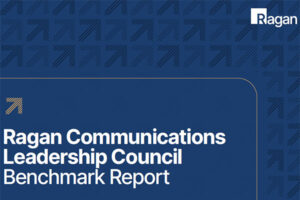Steal these marketing strategies to level up your employee communications
Marketing’s way of doing things can greatly inform employee comms.

By leveraging strategies that have historically been part of marketing’s toolkit, such as employee personas and mapping the employee journey, companies are transforming the way they engage and communicate with their most valuable audience — their workforce.
Let’s look at some ways internal communications teams can “steal” marketing tactics to enhance employee connections, foster engagement, and drive organizational success.
Introduce more personalized technology
Gone are the days of “spray and pray” communications when leaders distributed messages broadly and crossed their fingers that the right audience found them. Employees now expect to receive communication internally in the same way they receive communication externally – with a heavy dose of personalization.
Marketing teams often leverage new and innovative ways to create more personalized experiences for customers. A key piece of that personalization involves gathering data to ensure you understand your audience and identifying the right technology to use.
Like marketing technology, internal communications platforms have also evolved to offer more personalization and measurement with mobile-first intranet, apps and customizable experiences based on the employee’s location, role, job level and interests.
As an internal communications leader, it’s important to review your Internal technology stack and look for opportunities to introduce mobile-first platforms and customization for employees based on engagement data, preferences and where they work.
Define your employee personas
Marketing teams have been defining customer personas for years, largely because they’ve had the tech and tools to customize content for each audience and stage of their journey. As internal comms teams evolve the tech at their disposal to introduce more advanced platforms with increased personalization, communications leaders are also seeking to better understand their employee audience.
That’s where defining and documenting your employee personas comes in. An employee persona is a profile for a specific employee group that outlines their characteristics, attitudes, wants and needs. This strategic documentation should be informed by survey data, focus groups and any employee feedback that you can gather that gives you a meaningful window into your employees’ goals, challenges, and preferred methods of communication.
Like customer personas, you’re going to want to break your audience into different segments and give them creative names, such as “Entry Level Eddie”, “Social Influencer Sally,” or “Experienced Executive Ellen.”
Do they need to be alliterations? No. But it’s a lot more fun that way.
As part of your personas, you’ll want to include:
- A photo to help personify the persona
- Key demographic information, like employee age, job title, tenure, seniority, department, location, family size, education, work history, etc.
- Goals and motivations
- Key challenges
- How they like to receive communications
- A quote that captures their personality
Documented employee personas also help create a sense of focus for internal communications teams to more strategically craft and distribute content that caters directly to each audience.
Map your employee journey
Another marketing tactic that communications leaders should steal comes in the form of creating employee journey maps.
Like customer journey maps, an employee journey map visualizes the employee experience from onboarding to exit and helps identify key touch points with employees to help fuel engagement at each stage of their journey.
Employee journey mapping helps both communications and HR leaders create a shared understanding of the employee experience, along with employee needs, pain points, communications relevance and helps identify any gaps in communication.
Here’s how to get started on mapping your employee journey:
- Define stages: Identify the various stages from recruitment, onboarding, development, and offboarding. Understand the key milestones and touchpoints within each stage.
- Gather insights: Conduct surveys, interviews, and focus groups with employees to gather insights about their experiences, expectations, and pain points at each stage.
- Visualize the journey: Create a diagram or storyboard, including touchpoints, emotions, and communication needs at each stage.
- Identify communication strategies: Develop communication strategies and messages that align with the specific needs and expectations of employees at each stage.
Collect data, measure success and optimize
There is one marketing concept that both communications and marketing leaders can agree on: data is king. In a survey Fratzke Consulting conducted of 240 communications leaders nationwide, 85% said they use data to inform their internal communications strategies and decisions.
Having a robust data collection strategy in place is essential to measure the effectiveness of your communications efforts and continuously optimize to increase success and employee engagement.
This strategy should include, but not be limited to, regularly collecting and reporting on:
- Employee intranet: Logins, traffic, page views, most popular posts
- Email: Open rate, click-through rates
- Employee apps: Adoption rates
- Employee feedback: Feedback forms, pulse surveys, annual surveys
- eNPS (employee net promoter score)
This data can also be used to communicate to executive leadership the importance of communications within your organization, based on the results you’ve been able to drive.
Communications leaders can level up their communications strategies by repurposing any one of these tactics that have historically been used by marketing teams. The marketing team won’t mind. In fact, many of them are happy to be thought partners and engage in best practice sharing.
As internal communications evolve and become increasingly complex, adapting marketing strategies to connect to your audience in new and meaningful ways is the next frontier.
Lisa Fratzke is a Founding Partner and Head of the Communications and Culture Practice at Fratzke Consulting, a human-centered strategic consulting firm that provides leaders with the strategies, audits and insights they need to achieve their top priorities.






